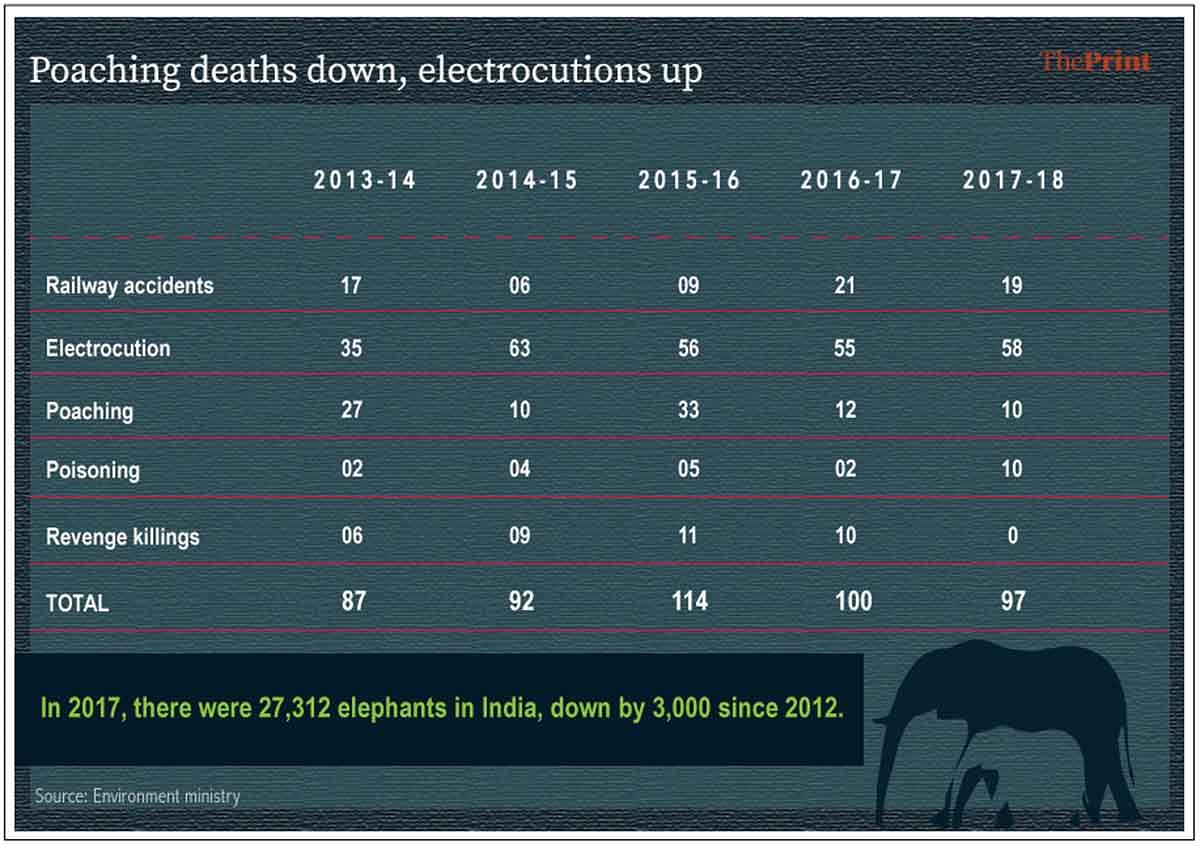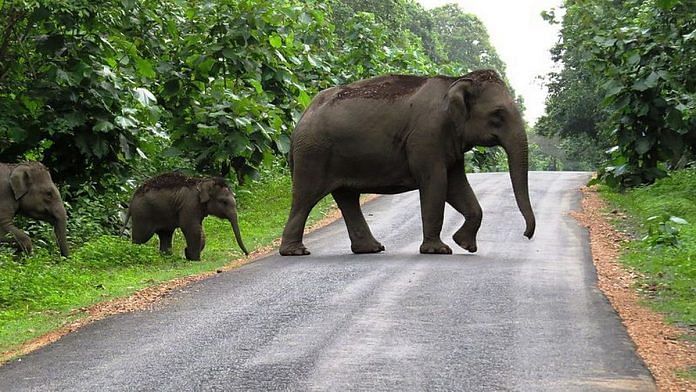Of the 490 deaths recorded in the past 5 years, more than half the deaths — 267 — occurred due to electrocution.
New Delhi: The death of a wild elephant while trying to escape angry villagers in Karnataka’s Nagarhole National Park last week triggered widespread outrage on social media.
The 42-year-old animal’s death is the latest reminder of the pachyderm problem in India. According to Environment Ministry data accessed by ThePrint, in the last five years, nearly 500 elephants have died in the country due to unnatural factors.
Out of the 490 deaths recorded since 2013, more than half the deaths — 267 — have occurred due to electrocution, followed by poaching (92), rail accidents (72), revenge killings (36) and poisoning (23).
In 2017-18, as many as 97 elephants were killed due to these five factors — a result of the increasingly rampant man-animal conflict phenomenon — making elephants the most persecuted wildlife species in the country.

According to a report published by the ministry last year, the elephant population in India is 27,312, down by 3,000 since 2012.
Reports said that the wild elephant which died in Nagarhole was stranded on a railway fence erected by the forest department, ironically to mitigate the man-elephant conflict.
Sharing the image of the elephant in Nagarhole, IFS officer Parveen Kaswan said, “Died while crossing railway fences near Nagarhole. This happens when we block path which are used by these animals from generations. When we want infrastructure in middle of their homes. With no fault of their own.”
Died while crossing railway fences near Nagarhole. This happens when we block path which are used by these animals from generations. When we want infrastructure in middle of their homes. With no fault of their own. pic.twitter.com/oiNqmXxA5s
— Parveen Kaswan, IFS (@ParveenKaswan) December 15, 2018
Also read: Electrocution, rail accidents, encroachment: Why elephants keep dying in India
Government action
In order to address the crisis, the government started ‘Project Elephant’ in 1992 to protect the Asian elephant, its habitat and corridors and address the man-elephant conflict.
However, with rapid urbanisation, encroachment of forest land, fragmentation of elephant corridors and illegal fencing on the rise, conflict with elephants is only expected to increase.
According to a report published by the Wildlife Trust of India (WTI) in 2017, national and state highways cut across over two-thirds of the 101 elephant corridors in India, which remain vital for their survival.
Although the government has an elaborate set of guidelines on the basis of which forest land can be diverted for non-forest purposes, diversion continues to take place for practices such as mining, road and highway construction and other developmental work — leading to more human and wildlife deaths.
The conflict is a two-way one. In the last four years, one human life was lost every day due to the man-elephant conflict, and a total of 1,465 people have been killed in the last four years, from 2013-14 to 2016-17.



